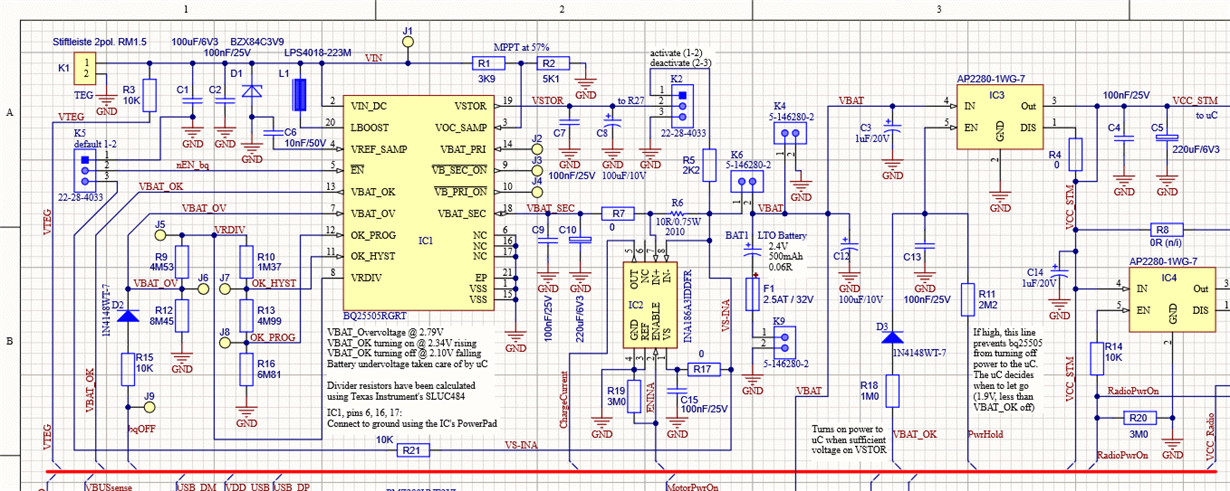Dear Support,
I'm using the bq25505 to charge a 2.4 V battery from a thermoelectric source. Initially, I had my circuit powered by the VSTOR pin but then I had to add charge current measurement (R6, IC2). The intention is to measure the full charge current, not the charge current minus some load current. So I removed all circuitry from VSTOR and connected it to the battery with switches. Now all current from the booster passes the current measurement on it's way to the battery. Refer to the above schematic.
With VSTOR not being used now, should I connect VSTOR to VBAT_SEC (R5 + K2) ? Should I isolate VSTOR ? Should I keep the capacitors (C7, C8) on VSTOR ?
I appreciate your help.
Best regards,
Martin



